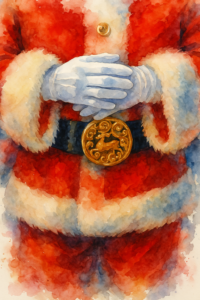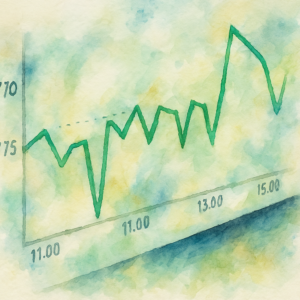Continue with French in real life with this episode from Transfert. Can you pick up: “a-t-elle dit”, “du côté des”, and “les vrais”? Try to fill in all 100% of the transcription in today’s fast clip.
Take the quiz, join the conversation.
Did you find this one challenging or easy? Did you hear something diffferent? What surprised you? What levels did you complete? Comment below and share what’s opening up for you with this quiz.
Learn French with a podcast snippet! This clip is is from Transfert s01ep22. We do not own the content. Listen to the entire episode here.
The above audio sample and transcription is from Transfert s01ep22. We do not own the content. Listen to the entire episode here.
she said
What’s opening up for you with this clip?
The snippet in English
Find a translation of this snippet here, how much of this did you hear?
« Je crois qu’on avait besoin », a-t-elle dit, « d’un récit qui nous ressemble, c’est-à-dire un récit du côté des sensibles, des fragiles, un récit du côté des amitiés solidaires, des humiliés, les vrais. »
I think what we needed,” she said, “was a story that resembled us, that is to say, a story on the side of the sensitive, the fragile, a story on the side of friendships in solidarity, of the humiliated, the real ones.
The above translation from Deepl
What does “a-t-elle dit” mean?
Meaning and Usage:
- In Questions: Most learners of French first encounter “a-t-elle” within questions. The inversion of the subject and verb, with the addition of “-t-” for phonetic reasons, denotes a question. Example: “A-t-elle fini ses devoirs?” (Has she finished her homework?)
- In Statements: Beyond questions, “a-t-elle” can also appear in statements, especially in literary or formal contexts. In such cases, it does not indicate a question but a specific flow of the sentence where the subject comes after the verb, often for poetic or emphatic effect. Example: “Jamais a-t-elle ressenti une telle émotion.” (Never has she felt such emotion.)
- In Dialogue Attribution: Within written dialogues, “a-t-elle dit” is a regular way to attribute speech. It’s neither overly formal nor informal; it’s just standard written French. Example: “Je ne peux pas venir,” a-t-elle dit. (“I can’t come,” she said.)
Context:
- The structure is standard in written French for dialogue attribution and is equally seen in literature, journalism, and other written mediums.
- The inversion in standalone statements is more typical of literature or formal texts and isn’t as common in colloquial speech.
Idiomatic Usage:
- Using inversions in statements can be about style and emphasis, making a sentence sound more refined or fit a specific rhythm in literature.
Cultural Notes:
- Literary Style: The inversion in statements is a stylistic device that adds elegance or emphasis. Authors might use it to draw attention or to fit a poetic meter.
- Historical Usage: While more common in older French texts, it’s still seen in modern literature for stylistic reasons.
- Aesthetic Value: Inversions, both in questions and statements, can add a musicality to the sentence, making it flow better and be more pleasing to the ear.
What does “du côté des” mean?
Meaning and Usage:
- Translation: “Du côté des” can be translated to “on the side of” or “from the side of” in English, but it often holds a more figurative sense meaning “among” or “in terms of.”
- Examples:
- “Du côté des finances, tout va bien.” (In terms of finances, everything is fine.)
- “Je vais voir du côté des voisins s’ils ont vu mon chat.” (I’ll check with the neighbors to see if they’ve seen my cat.)
Context:
- The phrase is versatile and can be used in both formal and informal settings. It’s a way to refer to a specific group, domain, or area of interest.
Synonyms:
- Parmi (among)
- En ce qui concerne (as for, concerning)
Idiomatic Usage:
- “Du côté de” can also be used more literally to indicate a geographical or spatial direction, similar to “towards” or “in the direction of.”
- “Je vais du côté de Paris ce week-end.” (I’m going towards Paris this weekend.)
Cultural Notes:
- Common in Daily Speech: The phrase is quite commonly used in everyday French conversation. It’s a handy way to specify a certain domain or group without being overly formal.
- Spatial & Figurative: The beauty of this phrase lies in its dual usage. It can be both spatial (referring to a direction) and figurative (referring to a domain or group), making it a useful phrase in diverse contexts.
- Variations by Region: In some regions or contexts, you might hear just “du côté” without the “des”, especially when referring to a direction or place. The context usually makes the meaning clear.
In essence, “du côté des” is a flexible and commonly used phrase in French that can denote both spatial direction and figurative association, making it a valuable addition to one’s vocabulary.
What does “les vrais” mean?
Meaning and Usage:
- Translation: “Les vrais” can be translated to “the real ones” or “the true ones” in English. It often refers to authentic, genuine, or sincere people or things.
- Examples:
- “Seuls les vrais amis restent à vos côtés dans les moments difficiles.” (Only the true friends stay by your side in difficult times.)
- “Parmi toutes ces rumeurs, comment distinguer les vrais faits des faux ?” (Among all these rumors, how can one distinguish the true facts from the false ones?)
Context:
- “Les vrais” can be used in various contexts, both formal and informal. It emphasizes authenticity or genuineness, often in contrast to something considered fake or insincere.
Synonyms:
- Les authentiques (the authentic ones)
- Les sincères (the sincere ones)
Idiomatic Usage:
- “Les vrais savent” is a colloquial expression that roughly means “those who know, know” or “the real ones know”. It implies that only those who are genuinely informed or in-the-know understand a particular topic or situation.
- “Il ne fait pas toujours ce qu’il dit, mais les vrais savent qu’il a bon cœur.” (He doesn’t always do what he says, but those who really know him understand that he has a good heart.)
Cultural Notes:
- Pop Culture Influence: The term “les vrais” has been popularized in pop culture, especially in music and on social media platforms. It’s often used to denote genuine supporters or followers.
- Youth Speak: Especially among the younger generation, “les vrais” can be a way of emphasizing authenticity in a world where many things can be superficial. For instance, on social media, someone might post a photo with close friends and caption it “Avec les vrais” (With the real ones) to emphasize the depth of their relationships.
- Contrast with the Fake: Given the global rise of discussions around “fake news” and authenticity in media and interactions, phrases like “les vrais” gain more significance in drawing contrasts between what’s genuine and what’s not.
- Diverse Usage: The phrase can be applied to various contexts, from friendships to products. For example, in a market with many imitations, a brand might emphasize its product as being among “les vrais” to highlight its authenticity.
In summary, “les vrais” is a term that emphasizes authenticity and sincerity, with its usage ranging from personal relationships to broader societal contexts. The phrase holds significant cultural resonance, especially in today’s world of often-blurred lines between authenticity and fabrication.
What is opening up for you?
Comment below with the words you thought you heard, where you struggled, where you surprised yourself, or what you thought about this clip. Every little bit inspires other learners, thank you for being that inspiration to others on their French fluency journey!
Continue with French in real life with this episode from Transfert. Can you pick up: “a-t-elle dit”, “du côté des”, and “les vrais”? Try to fill in all 100% of the transcription in today’s fast clip.
Take the quiz, join the conversation.
Did you find this one challenging or easy? Did you hear something diffferent? What surprised you? What levels did you complete? Comment below and share what’s opening up for you with this quiz.








